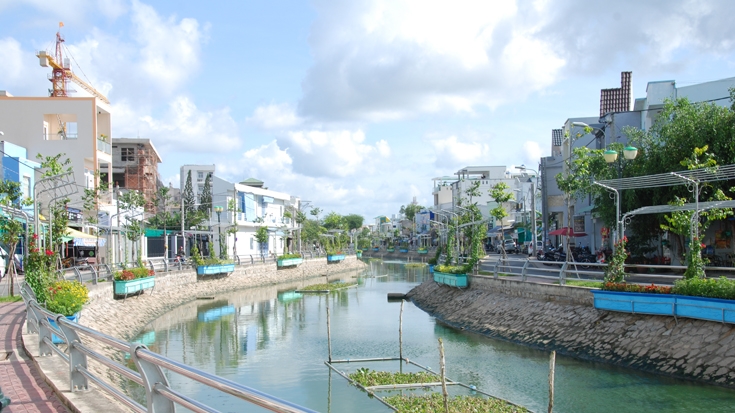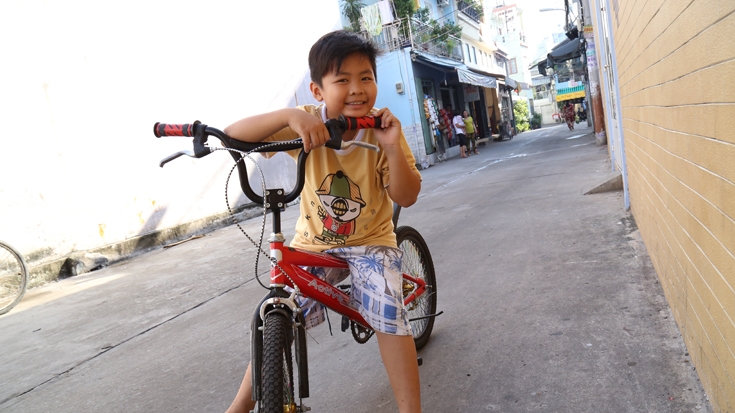Ho Chi Minh City, December 19, 2014 - Bui Thi Mai owns a busy shop in Alley 76 on Ton That Thuyet Street in Ho Chi Minh City. She still recalls that just four years ago, the narrow, dirty and unsafe alley prevented her from expanding her business.
“Back then, the alley was so narrow that only one motorbike could get in,” said Mai. “There was no drainage so it was often flooded, making garbage float and mosquitoes breed. It was unsafe for our health. There were few street lights, allowing criminals to hide in the dark corners.”
Despite achievements in poverty reduction, urban poverty in Vietnam started rising in the early 2000s, especially among unregistered migrants who are often among the poorest in cities. Low-income areas faced frequent flooding and suffered from poor sanitation. They had no direct water supply and sewerage connections. These caused serious health and environmental risks to the urban poor.
Implemented from 2004 to 2014, the Vietnam Urban Upgrading Project addressed those challenges in the cities of Hai Phong, Nam Dinh, Ho Chi Minh City and Can Tho.
Under the World Bank-supported project, more than 200 low-income areas like Mai’s neighborhood have been upgraded, directly benefiting 2.5 million urban poor. Homes now have water supply, drainage, electricity, and sanitation services. Narrow, dirty and flooded alleys are now paved, wider, cleaner and safer. Ambulances and fire trucks can now access houses. Children can play around the neighborhood and residents can expand their businesses.
“Running my business is much easier because the street is cleaner and safer,” Mai said. “Trucks can carry goods to my door. More shops and restaurants have been opening along this big street.”
Improvements in roads, canals, lakes, sewer and bridges, would benefit an additional five million urban residents.
About 500 kilometers (310 miles) of drains and 580 kilometers (360 miles) of roads have been constructed or upgraded, improving access, reducing flooding, and improving the environmental conditions in poor neighborhoods. Nearly 30 kilometers (18 miles) of canals and seven hectares (17 acres) of lakes were dredged and connected to the drainage system. Over 800 meters (0.5 mile) of bridges and 240 kilometers (150 miles) of roads were constructed to reduce flooding and to improve both traffic capacity and the cityscape. The project also upgraded kindergartens, schools, health clinics and community centers in low-income neighborhoods.




